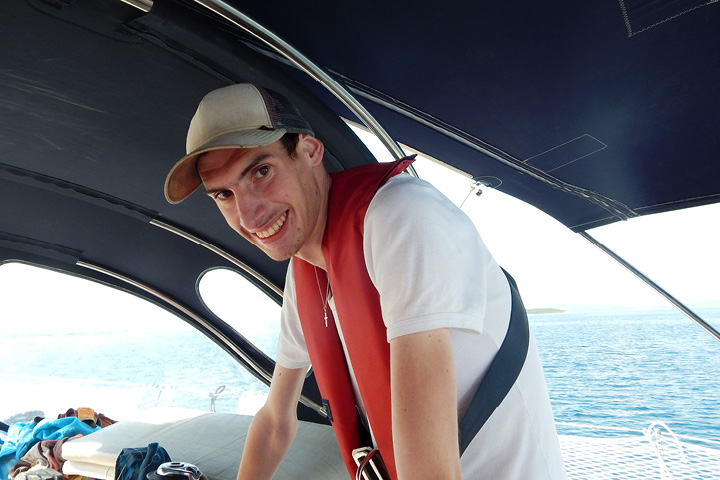Cystic fibrosis patients are among those at increased risk of a severe COVID-19 infection. However, the disease can be harmless, as was the case for Tobias. The 29-year-old has cystic fibrosis.

In January 2020 Tobias even had to be hospitalised and undergo surgery for a tear in one of his lungs. After the procedure and four weeks in hospital which he spent lying down almost all the time, he was obviously unfit. This was evident in his FeV1 result that measures lung function. His was significantly restricted at only 40%. “Because of my poor health I was of course appreciably worried about the spread of coronavirus. My baseline was pretty poor. I tried to get fitter again. If you are unfit and the lungs are fragile, inhalation with airway-expanding hypertonic saline solution and antibiotics morning and evening is a more important part of your daily routine than ever. Luckily, the e-Flow means that inhalation is done and dusted quite quickly, even if you have to inhale several medications after another. However, the more the virus spread, the more I respected the risk it posed and the more careful I was and limited what I did”, says Tobias. So he went into self-isolation a week before the official lockdown in Germany to protect himself from coronavirus. But little did he know that he was already infected – and hadn’t even noticed!
“I only found out I had had COVID-19 by pure chance and retrospectively”, reports Tobias. “At a follow-up appointment in June with my lung specialist I had a COVID-19 antibody test. I was extremely surprised that the test was positive. To rule out any uncertainty and a potentially false-positive test result, my GP repeated the test. The result was the same: I had obviously already had coronavirus. I was baffled that I hadn’t even noticed anything.”
This also makes it difficult for Tobias to work out where he may have caught it: “I can think of only two occasions where I could have become infected. It might have been at an election rally. I had about a five minute discussion with the candidate from the opposing party. He tested positive for coronavirus a few days later, but I only found out about that weeks down the line. Or it could have been when I met up with a friend. A few days after our meeting he had classic coronavirus symptoms but was not tested. Before our meet-up, my friend had visited a game of ice hockey where he bumped into friends who developed COVID-19 after the game. This was at the beginning of March and just before I went into self-isolation. During my self-isolation I didn’t leave the house to go shopping. A friend of mine and my brother did my shopping for me. Because of my self-imposed isolation I was not able to infect anyone else with coronavirus. Given that I didn’t have any health problems, it did not occur to me that I had COVID-19. I didn’t increase my therapy or anything like that. I just had the usual inhalation with hypertonic saline solution and antibiotics twice a day.”
The coronavirus pandemic is worrying a lot of patients with cystic fibrosis. But what if you have had an asymptomatic infection? Does your attitude change? Tobias explains: “When the pandemic was in full swing, I naturally had my concerns and I have held back on activities since then. Now I am a bit more relaxed. Over the summer I am definitely not going to restrict myself as much because I imagine the antibodies are going to protect me for a while at least. At least that is what I assume. That is why I am less worried about a second wave for me personally. Until my coronavirus antibody test came back positive, I was more worried than I am now. I will, of course, still wear a mask. That’s just a matter of general courtesy and respect towards others.”
Note: The statements made in the report are the individual view of the person reporting. They do not necessarily reflect the PARI view or the general state of science.
An article written by the PARI BLOG editorial team.
© 2025 PARI GmbH Spezialisten für effektive Inhalation